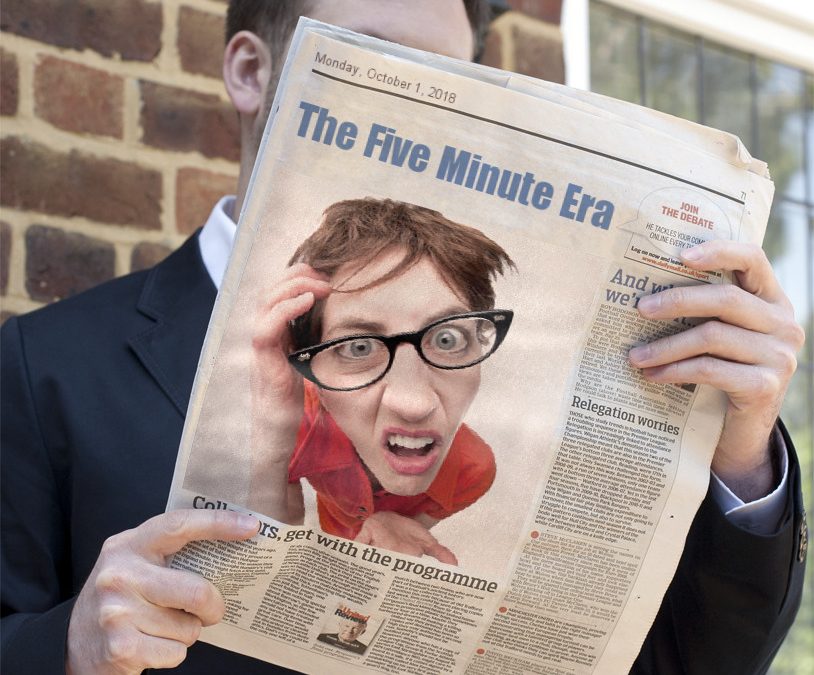In a post I wrote recently, a publication I cited mentioned the loyalty era. That got me thinking about how, when, and why we decided everything now has to be referred to as an era. It also made me wonder (1) what might have to transpire and (2) how much time might have to elapse before something might be fairly considered an era. After some perfunctory empirical research, the conclusions to my wondering are, in order:
- Not much.
- Not long.
To help put the era phenomenon in perspective, and because I’m that kind of guy, I thought an equally perfunctory summary of some of our more notable eras might be in order here. You’re welcome. Don’t mention it.
A Brief History
With no particular chronological order implied or intended — and without explication of the loyalty era, which, as you know from having read my earlier post on the subject, has already given way to the relevance era — the most notable eras should, of course, include:
- The Electronic Era is generally considered to have originated with Guglielmo Marconi, who perfected the wireless telegraph just in time to make sure Hawley Crippen ended up in the hoosegow.
- The Internet Era was ushered in by Al Gore, who couldn’t stand the thought of being one-upped by a disc jockey wanna-be with a telegraph key.
- The Digital Era, which remains in a state of utter confusion and persistent meaninglessness, connotes a marketing ploy based on the 1s and 0s that constitute binary code. Alternately billed as digitalization and digital transformation, it allegedly connoted the communications epoch that followed the jungle telegraph, smoke signals, and the Electronic Era.
- The Customer Experience Era, an offshoot of the automated dissemination of spam precipitated by the Digital Era, is intended to denote the practice of taking one actual purchase, extrapolating it into semi-fictional personae, and using those personae to spam thousands of real people who may or may not want to make the same purchase. The term is also used as a surrogate for the psychology and/or the common sense that might otherwise be used to deduce what people want and need.
- The Modern Era is often divided into early and late periods. The early modern era is generally held to have begun in the early 16th century when Martin Luther used the same press on which Johannes Gutenberg printed his Bible to run off the Ninety-five Theses he nailed to the door of All Saints’ Church. The late modern era began about 20 minutes later
- The Post-Modern Era began when the philosopher, Jacques Derrida, started the deconstruction movement, which sought to read texts for the purpose of showing the meaning of language is complex, unstable, or impossible to discern. The era ended when the deconstructionists discovered the impossibility of using the language they were using to criticize language to criticize language.
- The Post-Post-Modern Era countered the post-modern era with a move to temper the nihilism of deconstruction with faith in construction. The British landscape architect, Tom Turner, is credited with officially starting the post-post-modern era by building an entire London city park using only words.
- The Post-Post-Post-Modern Era, in reaction to the prior eras, seeks to go back to the Prehistoric Era and start all over.
What’s Next?
I’ll be damned if I know where we go from here. All I can suggest is that we get over ourselves, our self-importance, and our penchant for placing every passing fad and fancy on the same plane of hyperbolic importance. Unless we’ve discovered the cure for gullibility or genetically engineered the honest politician, it’s just not that big a deal.
What we really need is The Common Sense Era.

